

LUIGI RIDOLFI VAY DA VERRAZZANO
The Associazione Fiorentina del Calcio was the fruit of his passion: he wanted a football club, established it, grew it, nurtured it and governed it using his personal heritage. From 29 August 1926 to 21 August 1942 – when he was called to become head of the FIGC – he made all the decisions that entered the Viola into Italy’s football elite and was the guarantor in all economic difficulties. Thirty years after the team’s foundation, Fiorentina won their first Scudetto, and Ridolfi was hailed by fans, staff, and by the championship winning team as the “Father” of Fiorentina.
FROM 29 AUGUST 1926 TO 21 AUGUST 1942


LUIGI RIDOLFI VAY DA VERRAZZANO
FROM 29 AUGUST 1926 TO 21 AUGUST 1942
The Associazione Fiorentina del Calcio was the fruit of his passion: he wanted a football club, established it, grew it, nurtured it and governed it using his personal heritage. From 29 August 1926 to 21 August 1942 – when he was called to become head of the FIGC – he made all the decisions that entered the Viola into Italy’s football elite and was the guarantor in all economic difficulties. Thirty years after the team’s foundation, Fiorentina won their first Scudetto, and Ridolfi was hailed by fans, staff, and by the championship winning team as the “Father” of Fiorentina.
SCIPIONE PICCHI
Always Ridolfi’s right-hand-man, Picchi had previously assumed important roles in the organisation. On 18 September 1942, he was authorized by CONI to take over from the Marquis at Fiorentina. His presidency lasted just over a year; the war and the German invasion forced Fiorentina to suspend all activities.
FROM 18 SEPTEMBER 1942 TO 31 JANUARY 1944 (suspended activity)


SCIPIONE PICCHI
FROM 18 SEPTEMBER 1942 TO 31 JANUARY 1944 (suspended activity)
Always Ridolfi’s right-hand-man, Picchi had previously assumed important roles in the organisation. On 18 September 1942, he was authorized by CONI to take over from the Marquis at Fiorentina. His presidency lasted just over a year; the war and the German invasion forced Fiorentina to suspend all activities.
ARRIGO PAGANELLI
The very next day after 11 August 1944, the Tuscan Committee of National Liberation and the Municipality of Florence set to work, appointing Paganelli to chair a commission for the reorganisation of sporting activities. A few months later, Fiorentina was reborn thanks to its commitment on this new basis, that of a democratic association governed and organised by its members: the Associazione Calcio Fiorentina.
FROM 22 OCTOBER 1944 TO 9 JUNE 1946
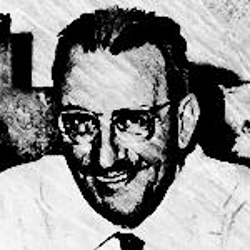

ARRIGO PAGANELLI
FROM 22 OCTOBER 1944 TO 9 JUNE 1946
The very next day after 11 August 1944, the Tuscan Committee of National Liberation and the Municipality of Florence set to work, appointing Paganelli to chair a commission for the reorganisation of sporting activities. A few months later, Fiorentina was reborn thanks to its commitment on this new basis, that of a democratic association governed and organised by its members: the Associazione Calcio Fiorentina.
IGINO CASSI
Cassi joined the A.C. Fiorentina Council with Paganelli, becoming president in June 1946. He put his experience as a businessman at the club’s disposal to equip it with the necessary means to compete in Serie A, starting from the 1946-47 season. He considered his work to be done when he managed to bring wealthier members to Fiorentina.
FROM 9 JUNE 1946 TO 9 MARCH 1947
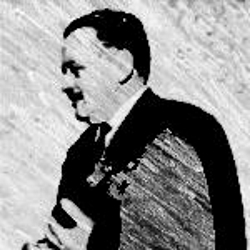

IGINO CASSI
FROM 9 JUNE 1946 TO 9 MARCH 1947
Cassi joined the A.C. Fiorentina Council with Paganelli, becoming president in June 1946. He put his experience as a businessman at the club’s disposal to equip it with the necessary means to compete in Serie A, starting from the 1946-47 season. He considered his work to be done when he managed to bring wealthier members to Fiorentina.
ARDELIO ALLORI
In March 1947, this young industrialist from Prato was appointed as President, filling the fans at the time with enthusiasm. Yet Allori, despite his commitment and generosity, found many difficulties in the world of football and in Fiorentina’s Council itself, leaving office after just over a year of presidency.
FROM 9 MARCH 1947 TO 6 APRIL 1948
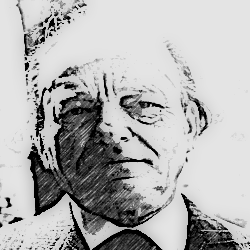
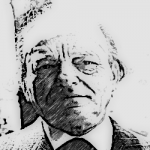
ARDELIO ALLORI
FROM 9 MARCH 1947 TO 6 APRIL 1948
In March 1947, this young industrialist from Prato was appointed as President, filling the fans at the time with enthusiasm. Yet Allori, despite his commitment and generosity, found many difficulties in the world of football and in Fiorentina’s Council itself, leaving office after just over a year of presidency.
CARLO ANTONINI
Antonini became president in April 1948 and was the right man to consolidate Fiorentina between the end of the 1940s and the 1950s. He was able to mediate between the different opinions of the members and brought the club back into calm waters. He achieved this through a lot of organisational work (he appointed Artemio Franchi as club secretary) and appointed Luigi Ferrero as Coach, with whom Fiorentina opened a cycle that led to significant progress.
FROM 6 APRIL 1948 TO 24 DECEMBER 1951


CARLO ANTONINI
FROM 6 APRIL 1948 TO 24 DECEMBER 1951
Antonini became president in April 1948 and was the right man to consolidate Fiorentina between the end of the 1940s and the 1950s. He was able to mediate between the different opinions of the members and brought the club back into calm waters. He achieved this through a lot of organisational work (he appointed Artemio Franchi as club secretary) and appointed Luigi Ferrero as Coach, with whom Fiorentina opened a cycle that led to significant progress.
ENRICO BEFANI
The President of the Scudetto and Champions Cup final winning team as well as four consecutive second places. This success was born of the strategic vision of the Prato industrialist and his Board of Directors. Befani built a state-of-the-art company, both on a technical level – by entrusting the team to Fulvio Bernardini – and from a backroom point of view. With him, Fiorentina were taken to the top of Italian football.
FROM 29 DECEMBER 1951 TO 20 MAY 1961
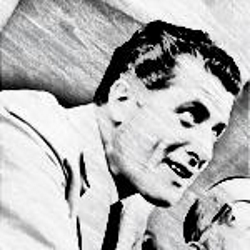

ENRICO BEFANI
FROM 29 DECEMBER 1951 TO 20 MAY 1961
The President of the Scudetto and Champions Cup final winning team as well as four consecutive second places. This success was born of the strategic vision of the Prato industrialist and his Board of Directors. Befani built a state-of-the-art company, both on a technical level – by entrusting the team to Fulvio Bernardini – and from a backroom point of view. With him, Fiorentina were taken to the top of Italian football.
ENRICO LONGINOTTI
The second Scudetto that never arrived eroded the relationship between Befani and a large part of the partners, who bet on “Enrico II” – the iron industrialist. Between the two presidencies came the successes of 1961: the Cup Winners’ Cup and the Coppa Italia. It seemed like a good omen, but Longinotti’s Fiorentina failed to emulate what had been achieved during the previous cycle and, with a large debt to the bank, the president passed the club on to someone else.
FROM 7 JUNE 1961 TO 13 FEBRUARY 1965
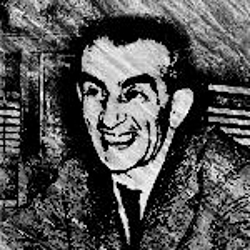

ENRICO LONGINOTTI
FROM 7 JUNE 1961 TO 13 FEBRUARY 1965
The second Scudetto that never arrived eroded the relationship between Befani and a large part of the partners, who bet on “Enrico II” – the iron industrialist. Between the two presidencies came the successes of 1961: the Cup Winners’ Cup and the Coppa Italia. It seemed like a good omen, but Longinotti’s Fiorentina failed to emulate what had been achieved during the previous cycle and, with a large debt to the bank, the president passed the club on to someone else.
NELLO BAGLINI
A big Fiorentina fan since the Ridolfi era, Baglini took over the reins of the club in February 1965 expressing two aims; to restore the budget and win the Scudetto. “Fiorentina ye-ye” was born, capable of creating on pitches all over Italy and winning the 1968-69 championship, also thanks to Nello Baglini’s foresight and diplomatic skills.
FROM 14 FEBRUARY1965 TO 31 MAY 1971


NELLO BAGLINI
FROM 14 FEBRUARY1965 TO 31 MAY 1971
A big Fiorentina fan since the Ridolfi era, Baglini took over the reins of the club in February 1965 expressing two aims; to restore the budget and win the Scudetto. “Fiorentina ye-ye” was born, capable of creating on pitches all over Italy and winning the 1968-69 championship, also thanks to Nello Baglini’s foresight and diplomatic skills.
UGOLINO UGOLINI
It fell to Ugolini, who had the advantage of experience from being on the two previous councils, to lead Fiorentina when Baglini left in June 1971, due to a number of problems. Ugolini managed to defend the team in the most difficult moments and to build a second Fiorentina team for young players that was only scuppered by bad luck, starting with the accidents of Vincenzo Guerini and Moreno Roggi.
FROM 1 JUNE 1971 TO 15 DECEMBER 1977

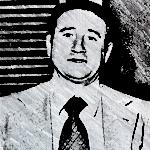
UGOLINO UGOLINI
FROM 1 JUNE 1971 TO 15 DECEMBER 1977
It fell to Ugolini, who had the advantage of experience from being on the two previous councils, to lead Fiorentina when Baglini left in June 1971, due to a number of problems. Ugolini managed to defend the team in the most difficult moments and to build a second Fiorentina team for young players that was only scuppered by bad luck, starting with the accidents of Vincenzo Guerini and Moreno Roggi.
RODOLFO MELLONI
“In my life I have family, work and Fiorentina,” Melloni replied to those who asked him why he spent so many hours in the club’s premises and never missed a trip. It was up to him – a long-time partner – to manage from December, the dramatic 1977-78 season. Fiorentina stayed up on the last day and rejected offers for Giancarlo Antognoni. President Melloni died on September 29, 1979 of a heart attack.
FROM 15 DECEMBER 1977 TO 29 SEPTEMBER 1979
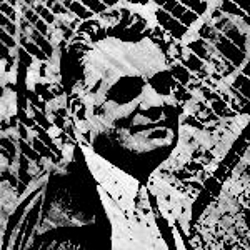

RODOLFO MELLONI
FROM 15 DECEMBER 1977 TO 29 SEPTEMBER 1979
“In my life I have family, work and Fiorentina,” Melloni replied to those who asked him why he spent so many hours in the club’s premises and never missed a trip. It was up to him – a long-time partner – to manage from December, the dramatic 1977-78 season. Fiorentina stayed up on the last day and rejected offers for Giancarlo Antognoni. President Melloni died on September 29, 1979 of a heart attack.
ENRICO MARTELLINI
Council member and Fiorentina official Enrico Martellini suddenly became President following the death of Melloni. He was able to manage the months that led to the purchase of the club by the Pontello family.
FROM 30 SEPTEMBER 1979 TO 2 MAY 1980


ENRICO MARTELLINI
FROM 30 SEPTEMBER 1979 TO 2 MAY 1980
Council member and Fiorentina official Enrico Martellini suddenly became President following the death of Melloni. He was able to manage the months that led to the purchase of the club by the Pontello family.
RANIERI PONTELLO
The man chosen by the Pontello family for the difficult role of President at the beginning of May 1980 was Ranieri, the son of Count Flavio Pontello. He took his job seriously, both in terms of ambition and enthusiasm that culminated in the 1981-82 season when a disengagement followed, as the family left the leadership of the club to external managers.
FROM 2 MAY 1980 TO 30 JUNE 1986
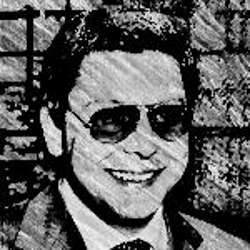

RANIERI PONTELLO
FROM 2 MAY 1980 TO 30 JUNE 1986
The man chosen by the Pontello family for the difficult role of President at the beginning of May 1980 was Ranieri, the son of Count Flavio Pontello. He took his job seriously, both in terms of ambition and enthusiasm that culminated in the 1981-82 season when a disengagement followed, as the family left the leadership of the club to external managers.
PIER CESARE BARETTI
Journalist and director of the Lega Calcio, Baretti was called by the Pontello family to lead the club without taking money out of the company. He had a great passion and a very advanced vision of football that he explained to everyone, starting with the fans. His idea was that of a sustainable football club in which organisation and knowledge could lead to success, even without huge financial investments. He had laid the foundations for a team built on young talents but did not have time to complete the project: he died in a plane crash on 5 December 1987.
FROM 1 JULY 1986 TO 5 DECEMBER 1987


PIER CESARE BARETTI
FROM 1 JULY 1986 TO 5 DECEMBER 1987
Journalist and director of the Lega Calcio, Baretti was called by the Pontello family to lead the club without taking money out of the company. He had a great passion and a very advanced vision of football that he explained to everyone, starting with the fans. His idea was that of a sustainable football club in which organisation and knowledge could lead to success, even without huge financial investments. He had laid the foundations for a team built on young talents but did not have time to complete the project: he died in a plane crash on 5 December 1987.
LORENZO RIGHETTI
A careful and scrupulous man, he was chosen by the Pontello family in December 1987 for his great experience as former referee and chief of referees, as well as a former President of the Lega Calcio from 1978 to 1981. He had to manage the difficult situation linked to the disengagement of the owners, which culminated in the sale of Baggio and the subsequent sale of the club, and did so with great ability in a difficult context and environment.
FROM 20 JANUARY 1988 TO 22 JUNE 1990


LORENZO RIGHETTI
FROM 20 JANUARY 1988 TO 22 JUNE 1990
A careful and scrupulous man, he was chosen by the Pontello family in December 1987 for his great experience as former referee and chief of referees, as well as a former President of the Lega Calcio from 1978 to 1981. He had to manage the difficult situation linked to the disengagement of the owners, which culminated in the sale of Baggio and the subsequent sale of the club, and did so with great ability in a difficult context and environment.
MARIO CECCHI GORI
“Marione”, one of the greatest protagonists of Italian cinema, crowned his dream by buying Fiorentina and, with him at the helm, the fans were able to dream once again. President from June 23, 1990, his enthusiasm clashed with the harsh reality of Italian football and was severely tested by the excesses of his son Vittorio. He reacted to the relegation by keeping the team’s strength intact. He died on November 5, 1993. His funeral, in Piazza Santa Croce, was a great demonstration of affection as well as a tribute from both the city and the fans to the person he was and his love for Fiorentina.
FROM 22 JUNE 1990 TO 5 NOVEMBER 1993


MARIO CECCHI GORI
FROM 22 JUNE 1990 TO 5 NOVEMBER 1993
“Marione”, one of the greatest protagonists of Italian cinema, crowned his dream by buying Fiorentina and, with him at the helm, the fans were able to dream once again. President from June 23, 1990, his enthusiasm clashed with the harsh reality of Italian football and was severely tested by the excesses of his son Vittorio. He reacted to the relegation by keeping the team’s strength intact. He died on November 5, 1993. His funeral, in Piazza Santa Croce, was a great demonstration of affection as well as a tribute from both the city and the fans to the person he was and his love for Fiorentina.
VITTORIO CECCHI GORI
A passionate and optimistic President, Vittorio Cecchi Gori used the public sphere to directly communicate his will and his intentions. His intensity proved fatal, and resulted in relegation in 1992-93. He relaunched and managed to bring Fiorentina back to become among the “Seven Sisters” of Italian football. Fiorentina paid for the crumbling of the great financial empire that it had inherited with the winding up order from the authorities on 1 August 2002.
FROM 4 DECEMBER 1993 TO 30 JULY 2001


VITTORIO CECCHI GORI
FROM 4 DECEMBER 1993 TO 30 JULY 2001
A passionate and optimistic President, Vittorio Cecchi Gori used the public sphere to directly communicate his will and his intentions. His intensity proved fatal, and resulted in relegation in 1992-93. He relaunched and managed to bring Fiorentina back to become among the “Seven Sisters” of Italian football. Fiorentina paid for the crumbling of the great financial empire that it had inherited with the winding up order from the authorities on 1 August 2002.
LUCIANO LUNA (AMM. DELEGATO)
The Cecchi Gori family’s trusted man in film production was entrusted with an important position at Fiorentina. In an attempt to avoid bankruptcy, he was handed the position of sole director from July 31, 2001 to January 31, 2002. He tried to sell the club, but his mission failed.
FROM 31 JULY 2001 TO 31 JANUARY 2002


LUCIANO LUNA (AMM. DELEGATO)
The Cecchi Gori family’s trusted man in film production was entrusted with an important position at Fiorentina. In an attempt to avoid bankruptcy, he was handed the position of sole director from July 31, 2001 to January 31, 2002. He tried to sell the club, but his mission failed.
UGO POGGI
A Florentine, cinema manager linked to Mario Cecchi Gori had previously been Vice President and resigned in May 2000 after a fallout with Luna. In February 2002 he accepted the request of Valeria, the wife of “Marione,” and became President. He made a promise to the fans: “I will never tell lies about the state of Fiorentina” and consequently resigned after two months.
FROM 12 FEBRUARY 2002 TO 26 MARCH 2002


UGO POGGI
FROM 12 FEBRUARY 2002 TO 26 MARCH 2002
A Florentine, cinema manager linked to Mario Cecchi Gori had previously been Vice President and resigned in May 2000 after a fallout with Luna. In February 2002 he accepted the request of Valeria, the wife of “Marione,” and became President. He made a promise to the fans: “I will never tell lies about the state of Fiorentina” and consequently resigned after two months.
OTTAVIO BIANCHI
Hired as a Technical Consultant, he would finish the 2001-02 season having covered all the roles from Coach to President. His reign from 9 April to 5 June 2002 was the last of A.C. Fiorentina.
FROM 9 APRIL 2002 TO 5 JUNE 2002


OTTAVIO BIANCHI
FROM 9 APRIL 2002 TO 5 JUNE 2002
Hired as a Technical Consultant, he would finish the 2001-02 season having covered all the roles from Coach to President. His reign from 9 April to 5 June 2002 was the last of A.C. Fiorentina.
ENRICO FAZZINI (AMM. GIUDIZIARIO)
The Court of Florence revoked the administrators and on June 6, 2002 appointed Enrico Fazzini as judicial administrator. He was President of the Order of Accountants of Florence and Professor of tax law at the Faculty of Economics and Commerce. Yet the Fiorentina rescue operation proved impossible.
FROM 5 JUNE 2002 TO 1 AUGUST 2002


ENRICO FAZZINI (AMM. GIUDIZIARIO)
FROM 5 JUNE 2002 TO 1 AUGUST 2002
The Court of Florence revoked the administrators and on June 6, 2002 appointed Enrico Fazzini as judicial administrator. He was President of the Order of Accountants of Florence and Professor of tax law at the Faculty of Economics and Commerce. Yet the Fiorentina rescue operation proved impossible.
LEONARDO DOMENICI
On 1 August 2002, the day of the Fiorentina’s winding up, the Mayor of Florence – together with the Councilor for Sport Eugenio Giani – set up the company “Fiorentina 1926 Florentia srl” to save Fiorentina’s sporting title and allow for the arrival of a new ownership.
FROM 1 AUGUST TO 10 AUGUST 2002

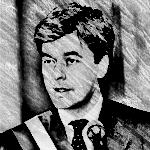
LEONARDO DOMENICI
FROM 1 AUGUST TO 10 AUGUST 2002
On 1 August 2002, the day of the Fiorentina’s winding up, the Mayor of Florence – together with the Councilor for Sport Eugenio Giani – set up the company “Fiorentina 1926 Florentia srl” to save Fiorentina’s sporting title and allow for the arrival of a new ownership.
GINO SALICA
Diego Della Valle, an important entrepreneur in the fashion sector, took over Fiorentina on 10 August 2002. The team had to restart from the C2 League, and the presidency was entrusted to a manager of the group Gino Salica. He proved to be the right President to bring Fiorentina back to the highest levels of Italian football with balance and diplomacy.
FROM 11 AUGUST TO 18 DECEMBER 2004
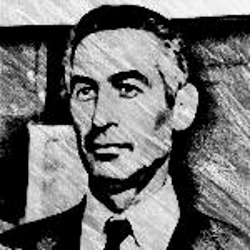

GINO SALICA
FROM 11 AUGUST TO 18 DECEMBER 2004
Diego Della Valle, an important entrepreneur in the fashion sector, took over Fiorentina on 10 August 2002. The team had to restart from the C2 League, and the presidency was entrusted to a manager of the group Gino Salica. He proved to be the right President to bring Fiorentina back to the highest levels of Italian football with balance and diplomacy.
ANDREA DELLA VALLE
Fiorentina returned to Serie A and the Della Valle family directly took over the Presidency with Andrea, Diego’s younger brother, in December 2004. The new President showed the enthusiasm of a fan, and Fiorentina prospered, until the ownership denounced the lack of support from the city. Andrea resigned the position on 24 September 2009, keeping only the position of Honorary President.
FROM 19 DECEMBER 2004 TO 24 SEPTEMBER 2009


ANDREA DELLA VALLE
FROM 19 DECEMBER 2004 TO 24 SEPTEMBER 2009
Fiorentina returned to Serie A and the Della Valle family directly took over the Presidency with Andrea, Diego’s younger brother, in December 2004. The new President showed the enthusiasm of a fan, and Fiorentina prospered, until the ownership denounced the lack of support from the city. Andrea resigned the position on 24 September 2009, keeping only the position of Honorary President.
MARIO COGNIGNI
(VICE PRESIDENT BEFORE AND FROM 14 JULY 2011 EXECUTIVE PRESIDENT)
(VICE PRESIDENT BEFORE AND FROM 14 JULY 2011 EXECUTIVE PRESIDENT)
Former director and Vice President of the company, Mario Cognigni was a lawyer from the Marche region and one of the top executives of the Della Valle group. He became Executive President when Andrea Della Valle left his position. The key points of his management were the self-financing of the club and the achievement of a balanced budget, preparing the long farewell of the Della Valle family from La Viola and the Italian football sphere itself.
FROM 24 SEPTEMBER 2009 TO 6 JUNE 2019


MARIO COGNIGNI
(VICE PRESIDENT BEFORE AND FROM 14 JULY 2011 EXECUTIVE PRESIDENT)
(VICE PRESIDENT BEFORE AND FROM 14 JULY 2011 EXECUTIVE PRESIDENT)
FROM 24 SEPTEMBER 2009 TO 6 JUNE 2019
Former director and Vice President of the company, Mario Cognigni was a lawyer from the Marche region and one of the top executives of the Della Valle group. He became Executive President when Andrea Della Valle left his position. The key points of his management were the self-financing of the club and the achievement of a balanced budget, preparing the long farewell of the Della Valle family from La Viola and the Italian football sphere itself.
ROCCO COMMISSO
On 6 June 2019 Rocco Commisso became the owner and President of Fiorentina. Rocco, from his first moments in Florence, managed to bring the enthusiasm back to the Viola supporters and gave an important change of pace in that Fiorentina must have its own stadium, a training centre and its own home. For the first time after 93 years of history the land in Bagno a Ripoli was acquired and the project for the construction of both was prepared. Fiorentina now looks to the future with renewed optimism …
FROM 6 JUNE 2019


ROCCO COMMISSO
FROM 6 JUNE 2019
On 6 June 2019 Rocco Commisso became the owner and President of Fiorentina. Rocco, from his first moments in Florence, managed to bring the enthusiasm back to the Viola supporters and gave an important change of pace in that Fiorentina must have its own stadium, a training centre and its own home. For the first time after 93 years of history the land in Bagno a Ripoli was acquired and the project for the construction of both was prepared. Fiorentina now looks to the future with renewed optimism …



